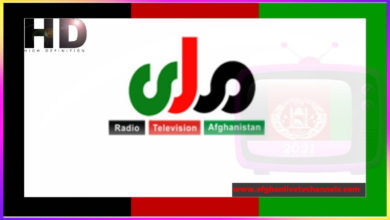Afghan TV: The Complete Guide to Afghanistan’s Pioneer Commercial Television


Introduction
Afghan TV stands as one of Afghanistan’s most significant commercial television stations, representing a pivotal chapter in the country’s modern media history. For more comprehensive information, visit the Afghan TV Wikipedia page. Launched on May 21, 2004, in Kabul, Afghan TV was founded by Ahmed Shah Afghanzai, an Afghan entrepreneur who envisioned creating a comprehensive entertainment and news platform for Afghan audiences. The channel quickly established itself as a major player in Afghanistan’s emerging private media sector, offering a diverse range of programming that included entertainment, news, sports, and educational content. Operating under the leadership of CEO Mohammad Hamayoon Sepehr, Afghan TV initially broadcast for 18 hours daily before expanding to 24-hour programming in July 2004. The station’s rapid growth and expansion reflected the growing appetite for diverse media content in post-Taliban Afghanistan. However, Afghan TV’s journey has been marked by both remarkable success and significant challenges, including regulatory disputes, content controversies, and ultimately, forced closure by Taliban authorities in June 2022. The story of Afghan TV encapsulates the broader narrative of media development, press freedom challenges, and the evolving political landscape in Afghanistan. From its pioneering role in commercial broadcasting to its international expansion and eventual closure, Afghan TV’s history provides valuable insights into the complexities of operating independent media in Afghanistan.
History and Founding of Afghan TV
Launch and Early Development
Afghan TV was officially launched on May 21, 2004, marking a significant milestone in Afghanistan’s media landscape. The channel was founded by Ahmed Shah Afghanzai, an entrepreneurial figure who recognized the potential for commercial television in post-Taliban Afghanistan. The timing of the launch was strategic, coinciding with a period of relative stability and media freedom that followed the fall of the Taliban regime. The station began operations with an ambitious 18-hour daily broadcasting schedule, which was remarkable for a newly established commercial television channel in Afghanistan. This extensive programming schedule demonstrated the founders’ commitment to providing comprehensive content to Afghan audiences who had been deprived of diverse media options for years.
Expansion to 24-Hour Broadcasting
Just two months after its launch, in July 2004, Afghan TV made the significant decision to expand to 24-hour broadcasting. This expansion represented a major investment in content production and technical infrastructure, positioning Afghan TV as one of the most comprehensive television services available in Afghanistan at the time. The move to round-the-clock broadcasting allowed Afghan TV to:
-
- Provide continuous news coverage
- Offer late-night and early-morning programming
- Serve different audience segments throughout the day
- Compete more effectively with international broadcasters
- Establish itself as a reliable source of information and entertainment
Leadership and Management Structure
Under the ownership of Ahmed Shah Afghanzai and the operational leadership of CEO Mohammad Hamayoon Sepehr, Afghan TV developed a professional management structure that emphasized both commercial viability and editorial quality. The leadership team brought together media professionals, business experts, and technical specialists to create a comprehensive television operation. The management philosophy of Afghan TV emphasized:
-
- Professional journalism standards
- Diverse programming content
- Commercial sustainability
- Audience engagement and satisfactio
- Technical excellence in broadcasting
Programming Strategy and Content Development
Entertainment Programming
Afghan TV distinguished itself through its diverse entertainment programming, which included content from multiple international sources as well as original Afghan productions. The channel’s entertainment strategy encompassed:
International Drama Series
-
- Indian television dramas and Bollywood films
- American television series and movies
- Korean drama series (K-dramas)
- Arabic television programs and series
- Turkish drama series popular in the regio
Sports Programming
-
- Live coverage of international sporting events
- Afghan national team matches and competitions
- Cricket coverage, particularly popular among Afghan audiences
- Football (soccer) matches and tournaments
- Traditional Afghan sports and competitions
Cultural and Social Programming
-
- Afghan music and cultural shows
- Traditional dance and performance programs
- Social issue discussions and debates
- Educational and informational content
- Religious and spiritual programming
News and Current Affairs
While Afghan TV operated a dedicated sister channel called Afghan News for 24-hour news coverage, the main channel also provided regular news programming. The news division focused on:
-
- Domestic Afghan political and social developments
- International news relevant to Afghan audiences
- Economic and business news
- Cultural and entertainment news
- Sports news and updates
Sister Channels and Expansion
Afghan TV developed a comprehensive media network that included several sister channels:
Afghan News
-
- 24-hour dedicated news channel
- Continuous coverage of breaking news
- In-depth analysis and current affairs programming
- Live coverage of major events and developments
Afghan Business
-
- Specialized business and economic programming
- Market analysis and financial news
- Entrepreneurship and business development content
- Economic policy discussions and analysis
Afghan FM 99.5
-
- Radio broadcasting complement to television operations
- Music and entertainment programming
- News and information updates
- Interactive audience engagement programs
Technical Infrastructure and Broadcasting Capabilities
High-Definition Broadcasting
Afghan TV invested significantly in modern broadcasting technology, including high-definition television (HDTV) capabilities. This technological advancement positioned the channel as a leader in broadcast quality within Afghanistan’s media landscape. The HDTV capabilities enabled Afghan TV to:
-
- Provide superior picture quality to viewers
- Compete with international broadcasting standards
- Attract advertisers seeking high-quality platforms
- Enhance viewer experience and satisfactio
- Future-proof the channel’s technical infrastructure
Studio and Production Facilities
Afghan TV established comprehensive studio and production facilities in Kabul, equipped with modern television production equipment. The facilities included:
-
- Multiple television studios for different program types
- News production and editing facilities
- Master control and broadcasting equipment
- Satellite uplink and transmission systems
- Mobile broadcasting units for field reporting
Transmission and Distribution Network
The channel developed an extensive transmission network to reach audiences across Afghanistan and internationally. This network included:
-
- Terrestrial broadcasting transmitters
- Satellite distribution systems
- Cable television partnerships
- Online streaming capabilities
- Mobile and digital platform integratio
International Expansion and Satellite Broadcasting
European Market Entry
Afghan TV achieved a significant milestone on June 15, 2011, when it launched on the Hotbird 13°E satellite, making the channel accessible throughout Europe. This expansion was crucial for serving the growing Afghan diaspora communities across European countries, including Germany, the United Kingdom, Netherlands, France, and other nations hosting Afghan refugees and immigrants. The European launch provided several benefits:
-
- Access to Afghan diaspora communities across Europe
- Increased advertising revenue potential
- Enhanced international profile and recognitio
- Cultural connection for Afghan expatriates
- Platform for Afghan cultural diplomacy
Middle Eastern Market Coverage
Recognizing the importance of Middle Eastern audiences, Afghan TV also became available on Turksat 3A 42°E satellite, providing coverage to viewers across the Middle East. This dual-satellite strategy ensured comprehensive coverage of Afghan communities in both European and Middle Eastern regions. The Middle Eastern coverage was particularly important for:
-
- Afghan refugees in Iran, Pakistan, and other regional countries
- Afghan workers and students in Gulf countries
- Cultural and linguistic connections with Persian-speaking populations
- Business and trade relationship development
- Regional political and cultural dialogue
Technical Challenges and Changes
Afghan TV’s international broadcasting faced several technical challenges and changes over the years. On June 27, 2011, the channel name on Hotbird was suddenly changed to ‘boxelet.com’ for unknown reasons, creating confusion among viewers and satellite tracking services. This change was later resolved, but it highlighted the technical and administrative complexities of international satellite broadcasting. Additionally, on December 23, 2011, Afghan TV suddenly ceased broadcasting on Hotbird satellite without prior notice, leaving European viewers unable to access the channel. While viewers in southern and eastern Europe could still access the channel via Express AM22 satellite, the loss of Hotbird coverage significantly reduced the channel’s European reach.
Controversies and Regulatory Challenges
2006 Supreme Court Fine
Afghan TV faced its first major regulatory challenge in early 2006 when the Afghan Supreme Court imposed a fine of 50,000 AFN (approximately US$1,000) on the station. The court ruled that the channel had broadcast inappropriate content, including what was deemed adult content, violating broadcasting standards and cultural sensitivities. This case had broader implications for Afghanistan’s media landscape:
Impact on Afghan TV
-
- Financial penalty and reputational damage
- Increased scrutiny of programming content
- Need for enhanced content review processes
- Adjustment of programming policies and standards
Broader Media Industry Effects
-
- Severe restrictions on entertainment programming across all networks
- Increased self-censorship among television stations
- Reduced diversity in entertainment content
- Enhanced influence of religious authorities over media content
The case was extensively covered by Afghan TV itself and other media outlets, demonstrating the channel’s commitment to transparency even when facing criticism. However, the powerful clergy’s success in not only imposing the fine but also restricting other television networks’ entertainment programming marked a significant shift in Afghanistan’s media environment.
Content Balancing Challenges
Following the 2006 controversy, Afghan TV faced ongoing challenges in balancing audience demand for diverse entertainment content with cultural and religious sensitivities. The channel had to navigate:
-
- Religious and cultural content guidelines
- Government regulatory requirements
- Audience expectations for entertainment
- Commercial viability and advertiser concerns
- International content licensing and adaptatio
The 2022 Closure Crisis
Taliban Takeover and Media Restrictions
The return of the Taliban to power in August 2021 marked the beginning of a challenging period for Afghanistan’s independent media, including Afghan TV. The new authorities implemented increasingly restrictive policies toward press freedom and independent journalism, creating an environment of uncertainty and pressure for media outlets. The broader context of media restrictions included:
-
- Arrests and intimidation of journalists
- Forced exile of media professionals
- Closure of numerous media outlets
- Restrictions on women’s participation in media
- Censorship of content deemed inappropriate by Taliban authorities
Forced Closure in June 2022
On June 2022, Afghan TV was forcibly shut down by Taliban authorities in a dramatic operation that highlighted the deteriorating state of press freedom in Afghanistan. According to multiple reports from Radio Free Afghanistan and Reporters Without Borders, armed Taliban personnel entered the station’s Kabul office, expelled staff members, seized broadcasting equipment including transmitters located in the Mehr-e-Wallac mountains, and locked the facility.
Official Justification
Taliban authorities claimed that Afghan TV had outstanding debts to:
-
- The national electricity company
- The telecommunications authority
- Other government entities
Afghan TV’s Response
Ahmad Shah Afghanzai, the channel’s director, disputed the Taliban’s claims, stating that:
-
- The cited debts were inherited from the previous government
- These debts were covered under a 7-year repayment decree issued by former President Ashraf Ghani
- The closure was unjustified and violated established agreements
International Response and Media Freedom Concerns
The closure of Afghan TV drew significant international attention and condemnation from media freedom organizations. Reporters Without Borders and other media watchdogs expressed concern that the closure was part of a broader crackdown on press freedom in Afghanistan, noting that dozens of journalists had been arrested or forced into exile since the Taliban’s return to power. The international response included:
-
- Condemnation from press freedom organizations
- Diplomatic protests from international governments
- Documentation of media freedom violations
- Support for exiled Afghan journalists
- Calls for restoration of media freedoms
Impact on Afghan Media Landscape
Pioneer Role in Commercial Broadcasting
Afghan TV played a pioneering role in establishing commercial television broadcasting in Afghanistan. As one of the first major commercial stations launched after 2001, the channel helped demonstrate the viability and importance of independent media in Afghanistan’s democratic development. Key contributions included:
-
- Establishing professional broadcasting standards
- Creating employment opportunities for media professionals
- Providing diverse entertainment and information content
- Serving as a model for other commercial broadcasters
- Contributing to media plurality and diversity
Influence on Programming Standards
Throughout its operational period, Afghan TV influenced programming standards and content development across Afghanistan’s television industry. The channel’s investment in high-quality production, international content, and professional journalism helped raise the bar for television broadcasting in the country.
Economic Impact
As a major commercial broadcaster, Afghan TV contributed significantly to Afghanistan’s media economy through:
-
- Direct employment of hundreds of media professionals
- Advertising revenue generation and market development
- Investment in technical infrastructure and equipment
- Support for related industries including production and distributio
- Contribution to Afghanistan’s cultural and creative economy
Legacy and Lessons Learned
Achievements and Successes
Despite its eventual closure, Afghan TV achieved numerous significant milestones during its operational period:
Technical Innovation
-
- Introduction of HDTV broadcasting in Afghanista
- Development of comprehensive multi-channel operations
- International satellite broadcasting capabilities
- Modern studio and production facilities
Content Development
-
- Diverse programming serving different audience segments
- International content licensing and adaptatio
- Professional news and current affairs programming
- Cultural and entertainment content productio
Market Development
-
- Establishment of commercial broadcasting viability
- International market expansion and diaspora service
- Advertising market development and growth
- Professional media industry standards
Challenges and Vulnerabilities
The Afghan TV experience also highlighted several challenges and vulnerabilities facing independent media in Afghanistan:
Political and Regulatory Risks
-
- Vulnerability to changing political environments
- Regulatory uncertainty and arbitrary enforcement
- Content censorship and cultural restrictions
- Security threats to staff and operations
Economic Sustainability
-
- Dependence on advertising revenue in unstable economy
- High operational costs for quality broadcasting
- Competition from international and regional broadcasters
- Limited domestic market size and purchasing power
Technical and Infrastructure Challenges
- Unreliable electricity and telecommunications infrastructure
- Equipment maintenance and replacement costs
- International satellite broadcasting complexities
- Digital transition and technology upgrade requirements
Frequently Asked Questions (FAQ)
1. When was Afghan TV founded and by whom?
Afghan TV was launched on May 21, 2004, by Ahmed Shah Afghanzai, an Afghan entrepreneur. The channel was based in Kabul and operated under the leadership of CEO Mohammad Hamayoon Sepehr.
2. What type of programming did Afghan TV offer?
Afghan TV offered diverse programming including entertainment shows, sports coverage, social and educational content, and international drama series from India, America, Korea, and Arabic countries. The channel also provided news coverage, though it operated a separate 24-hour news channel called Afghan News.
3. What were Afghan TV’s sister channels?
Afghan TV operated several sister channels including Afghan News (24-hour news channel), Afghan Business (business and economic programming), and Afghan FM 99.5 (radio broadcasting).
4. How did Afghan TV expand internationally?
Afghan TV launched on Hotbird 13°E satellite on June 15, 2011, making it available throughout Europe. The channel was also available in the Middle East through Turksat 3A 42°E satellite, serving Afghan diaspora communities worldwide.
5. What controversy did Afghan TV face in 2006?
In early 2006, Afghan TV was fined 50,000 AFN (approximately US$1,000) by the Afghan Supreme Court for broadcasting what the court called inappropriate content, including adult content. This case led to severe restrictions on entertainment programming across Afghanistan’s television networks.
6. What technical capabilities did Afghan TV have?
Afghan TV broadcast in high-definition television (HDTV) format and operated comprehensive studio and production facilities in Kabul. The channel invested significantly in modern broadcasting technology and equipment.
7. Why was Afghan TV closed in 2022?
Afghan TV was forcibly shut down by Taliban authorities in June 2022, who claimed the outlet had outstanding debts to the national electricity company and telecommunications authority. Armed Taliban personnel entered the station’s office, expelled staff, seized equipment, and locked the facility.
8. How did Afghan TV respond to the closure?
Afghan TV’s director, Ahmad Shah Afghanzai, stated that the debts cited by the Taliban were inherited from the previous government and were covered under a 7-year repayment decree issued by former President Ashraf Ghani.
9. What was the international response to Afghan TV’s closure?
Media watchdogs, including Reporters Without Borders, expressed concern that the closure was part of a broader crackdown on press freedom in Afghanistan. The closure drew international condemnation and highlighted deteriorating media freedom conditions.
10. What was Afghan TV’s impact on Afghanistan’s media landscape?
Afghan TV played a pioneering role in commercial broadcasting, established professional standards, created employment opportunities, and contributed to media diversity in Afghanistan. The channel helped demonstrate the viability of independent commercial television in the country’s post-2001 democratic development.
Conclusion
Afghan TV’s journey from its launch in 2004 to its forced closure in 2022 represents both the promise and the challenges of independent media in Afghanistan. As one of the country’s pioneer commercial television stations, Afghan TV demonstrated the potential for professional, diverse, and commercially viable broadcasting in post-Taliban Afghanistan. The channel’s achievements in technical innovation, international expansion, and content development established important precedents for Afghanistan’s media industry. Under the leadership of Ahmed Shah Afghanzai and CEO Mohammad Hamayoon Sepehr, Afghan TV successfully expanded from an 18-hour daily broadcaster to a comprehensive 24-hour operation with multiple sister channels and international satellite coverage. The channel’s investment in high-definition broadcasting technology and professional production facilities helped raise standards across Afghanistan’s television industry. However, Afghan TV’s experience also highlighted the vulnerabilities facing independent media in Afghanistan’s complex political environment. From the 2006 Supreme Court fine that restricted entertainment programming across the industry to the dramatic 2022 closure by Taliban authorities, the channel faced recurring challenges related to content censorship, regulatory uncertainty, and political pressure. The forced closure of Afghan TV in June 2022, along with the seizure of equipment and expulsion of staff, marked a tragic end to nearly two decades of commercial broadcasting innovation. The international condemnation of this closure, particularly from organizations like Reporters Without Borders, underscored the broader implications for press freedom and media diversity in Afghanistan. Despite its closure, Afghan TV’s legacy continues to influence discussions about media freedom, commercial broadcasting viability, and the role of independent television in Afghanistan’s social and cultural development. The channel’s story serves as both an inspiration for media entrepreneurs and a cautionary tale about the challenges facing independent journalism in politically unstable environments. As Afghanistan’s media landscape continues to evolve, the lessons learned from Afghan TV’s experience remain relevant for understanding the complex relationship between media, politics, and society in the region.
Related Afghan TV Channels
Explore more comprehensive guides to Afghanistan’s television landscape:
- Amu Television: Complete Guide to Afghanistan’s Independent Media Network
- ARIA TV: Complete Guide to Afghanistan’s Premier Entertainment Network (Coming Soon)
- Ariana Afghanistan TV: Complete Guide to the Premier Broadcasting Network (Coming Soon)







